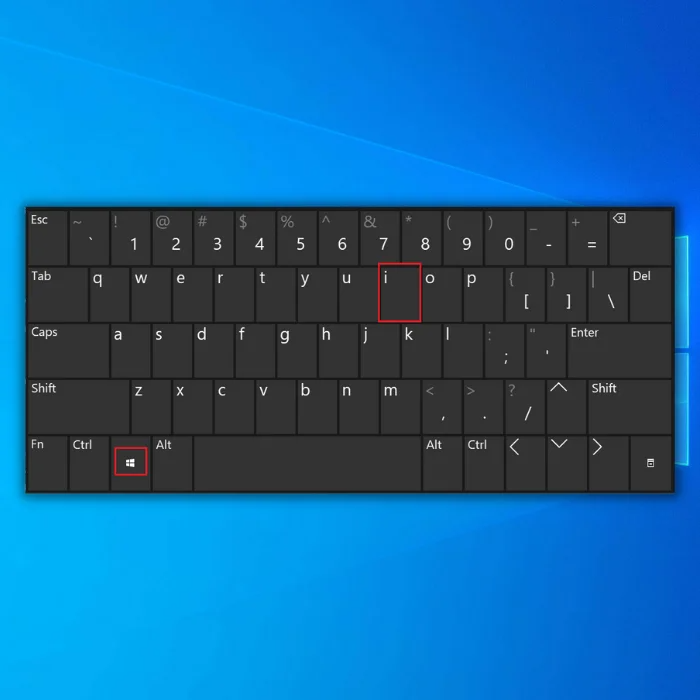![[Full Guide] How Do I Sync My Settings In Windows 10](https://cdn.techloris.com/app/uploads/2021/10/Windows-10-Sync-Settings.png)
[Full Guide] How Do I Sync My Settings In Windows 10
When Windows 10 Sync is on, it will track settings across multiple devices. This is an excellent feature if you use different devices like a tablet, a laptop, or a smartphone running on Windows 10. In short, you can avoid repetitive work and save lots of time by syncing all your devices with the same customizations.
In this article, we will look at how you can sync your settings in Windows 10. If Windows 10 Settings aren’t opening follow this guide instead.
Recommended: To easily install drivers automatically, use the tool below.
How To Sync Windows 10 Settings
- On your keyboard, press the “Windows logo + I.”

- Choose Accounts.

- On the left pane, click “Sync your settings.”
- On the right pane, you will see some options. To let your Windows 10 Sync settings, toggle “Sync Settings” between off and on.

How To Sync Individual Settings
Sometimes you may not want to sync all your settings. Setting up individual sync settings to do this. You can find these personal settings under the Sync your settings window. You can also switch off any settings that you don’t prefer to sync.
Turn on Windows 10 Sync Theme
You can sync your Windows 10 with a simple toggle of a button. You’ll be able to enjoy the same theme across multiple Windows 10 devices. You’ll only need to log in to your Microsoft account then a universal theme will automatically be applied. To sync the Windows 10 theme:
- On your keyboard, press “Windows logo” + “I” and choose “Accounts.”
- At the left pane, click on “Sync your settings.”
- Go to the right and toggle on the switch below pane from the “Individual Sync Settings” options.

How to Turn On Password Sync In Windows 10
Losing your password can be extremely hard, especially if you need to access several applications and accounts. You can turn off or on your Password Sync in Windows 10 to help you along.
- Right-click the Windows icon on the bottom left corner of your device and select Settings.
- Go to accounts and choose sync your settings.
- In the Individual Setting section, toggle the switch for “Password.”

How To Sync Language Preferences
Enabling Windows 10 Sync for “Language Preferences” will allow you to use your choice of the language across different devices. This is an excellent way to ensure you know your buttons and folders when using another device.
- Right-click the “Windows” icon on the bottom left corner of your device and select Settings.
- Go to the account and toggle the “Language preferences” button.

How to Sync Other Windows 10 Settings
You have various choices regarding the settings you want for your Windows 10 device. For example, you can set your different devices to follow the same accents, taskbar position, and so on.
- On your keyboard, press “Windows logo” + “I” and choose “Accounts.”
- At the left pane, click on “Sync your settings.”
- Toggle between on and off “Other Windows settings in Individual Settings.”

How to Configure Windows 10 Settings Sync using Group Policy Editor
Aside from doing it in the settings, you can also sync Windows 10 settings using the Group Policy Editor (Gpedit).
- Press the Windows logo key on your keyboard, type “gpedit.msc” and hit enter.

- Locate Computer configuration, then select “Administrative templates.” Next, choose Windows component and select Sync your settings.


- You’ll find policies for the sync options on the right pane, double click on “Do not sync.”

- Choose “Disabled” to start syncing and Enabled to stop syncing.
- Press “Apply” and OK.

How to Configure Windows 10 Individual Settings Sync using Group Policy Editor
- Press the “Windows” logo key on your keyboard, type “gpedit.msc” and hit enter.
- Locate “Computer configuration,” then select “Administrative template.” Next, choose “Windows component” and select “Sync your settings.”
- Double-click on the policy that you want to turn on or off.
- Press “Apply” and “OK.”
Summary
If you would notice, there aren’t a lot of complicated troubleshooting steps you need to perform. Most of the things you need to do are find 1 or 2 windows. If this article has helped, then go ahead and share it with your friends or family experiencing the same issue.

![[Full Guide] Troubleshoot the Sync Settings on Windows 10](https://cdn.techloris.com/app/uploads/2020/07/troubleshoot-sync-settings-windows10.png)


